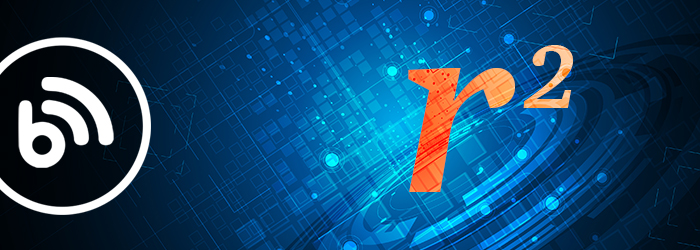Contents:


Using LTNP credit, you improve everyday control while building products and features to increase future revenue. Interest due can be deducted from the current year’s tax liability, lowering the overall cost of capital financing. They have specific terms and maturity periods of either one year or less (short-term) or more than one year (long-term). As long as invoices are paid promptly, suppliers will continue to fulfill new orders. Purchases do not incur interest within the repayment period and discounts may be offered for early payment.

Short-term liability notes payable agreements have shorter terms. If the payment due date is within a year from when the loan was given, this is a short-term liability. Long-term liability notes payables may cover a payment due date beyond a year from the date of the agreement. Lenders like banks will use notes payable agreements along with their loan agreements when loaning to a high-risk customer.
How to calculate notes payable with interest
These notes allow a business to purchase needed supplies and pay for them over a period of several months. In Steve’s journal, the amount he receives in terms of the note payable, $60,000, will be debited to his cash account and will be credited to the notes payable account. A note payable, or promissory note, is a written agreement where a borrower obtains a specified amount of money from a lender and promises to pay it back over a specific period. In simple terms, a note payable is a loan between you and a lender. When one takes up the loan and signs the agreement, it becomes the debit entry on the part of the one who borrows the amount.
What Are Bills Payable? Definition and How It Works in Banking – Investopedia
What Are Bills Payable? Definition and How It Works in Banking.
Posted: Sun, 26 Mar 2017 05:38:30 GMT [source]
As soon as the loan is repaid, the note payable account of the borrower is still on the debit side and cash on the credit side. This is because the debit side indicates no further liability for the borrower with the cash account being credited. Debts a business owes to its creditors are filed under liability accounts as a debit entry. In Steve’s balance sheet the note payable will be classified under long-term liabilities because the amount is due after 12 months.
Notes Payable vs Accounts Payable
On the other hand, short-term agreements are treated as current liabilities. Long-term notes payable provide the capital to invest in future growth, product development, and innovation, freeing up current assets for current operations. Notes include the principal amount issued by the lender, interest payable, payment interval, and security or collateral terms. These elements are encapsulated into a formal lending agreement between the borrower and lender.
Accounts payable are always short-term liabilities because they are due and payable within one year. These accounts payable involve credit received from businesses and vendors which require no written agreements and usually, no interest is charged on them. Accounts payable are typically day-to-day business expenses that businesses incur including supplies, utilities, goods, or professional services.

Notes payable are typically not converted into accounts payable but accounts payable can be converted into the notes payable as long as there is mutual consent and understanding of all parties involved. If periodic payments are made throughout the term of the note, the payments will reduce the notes payable balance. If you need help with notes payable to banks, you can post your legal need on UpCounsel’s marketplace.
This borrowed cash is typically used to fund large purchases rather than run a company’s day-to-day operations. Various specific manufacturing processes require the subcontracted services of other companies. When a company flies out its employees to attend a convention or meeting, the travel expenses and accommodations are often booked under accounts payable. Larger obligations, such as pension liabilities and capital leases, are instead usually tracked under long-term liabilities.
Balance Sheets
Without it, the benefit of strategic financing can be diminished or even become a vector for financial risk. As these partial balance sheets show, the total liability related to notes and interest is $5,150 in both cases. At the end of the note’s term, all of these interest charges have been recognized, and so the balance in this discount account becomes zero. To accomplish this process, the Discount on Notes Payable account is written off over the life of the note. The adjusting journal entry in Case 1 is similar to the entries to accrue interest. Interest Expense is debited and Interest Payable is credited for three months of accrued interest.
This interest expense is allocated over time, which allows for an increased gain from notes that are issued to creditors. Generally, there are no special problems to solve when accounting for these notes. As interest accrues, it is periodically recorded and eventually paid. Often, if the dollar value of the notes payable is minimal, financial models will consolidate the two payables, or group the line item into the other current liabilities line item.
Need help with a Note Payable?
Unlike a loan, they will not be issued with interest or have a fixed maturity date. No promissory notes are involved in a liability a company owes as accounts payable. Typically, businesses record notes payable under the liabilities section of the balance sheet.
- Add note payable to one of your lists below, or create a new one.
- Most of my career has been as in-house counsel for technology companies.
- Accounts payable is a liability account recorded on a company’s general ledger that tracks its obligations to pay off a short-term debt to its suppliers and lenders.
- This treatment ensures that the interest element is accounted for separately from the cost of the asset.
This resulted in an interest-bearing present value formula payable three years after date, with six per cent. This is called a blank indorsement, and makes the note payable to bearer. He agreed to give his note payable in one year for three hundred dollars, for my three counties. He had given a kind of note payable in the use of his conscience on demand.
Notes Payable Issued to Bank
Both notes payable and accounts payable are treated as liabilities on the balance sheet. Since, accounts payable have no interest accruing, in general, the treatment of accounts payable is not reflected on the income statement. Accounts payable is also maintained on a cash flow statement within operating cashflow activities.
Difference Between Accounts Payable and Receivable – business.com – Business.com
Difference Between Accounts Payable and Receivable – business.com.
Posted: Tue, 09 Nov 2021 19:30:00 GMT [source]
This situation may occur when a seller, in order to make a detail appear more favorable, increases the list or cash price of an item but offers the buyer interest-free repayment terms. Since 2008, I have worked to assist clients in solving problems and addressing challenges that inevitably arise as a business grows – both anticipated and unexpected. Have a formal agreement before the lender’s hands over the money. You can verify a promissory note by checking with the Securities and Exchange Commission’s EDGAR database. Debt can be scary when you’re paying off college loans or deciding whether to use credit to… A written agreement between two parties stating that one will pay the other back at a later date.
- If an organization fails to abide by the promise terms and conditions, it not only leads to a bad reputation but may adversely impact its overall credit score.
- The firm would report the USD 2,000 Bond Interest Payable as a current liability on the December 31 balance sheet for each year.
- This note transfers the liability for the loan agreement from accounts payable into notes payable.
- Notes payable are written agreements mostly created and issued for debt arrangements and are payable to credit companies and financial institutions.
- Here, the major portion is paid towards the principal and the rest towards applicable interest.
https://1investing.in/, are always considered short-term liabilities that must be settled within one year. One of the reasons we created LiveFlow is so that business owners, managers, and executives can have an easier-to-use alternative to pore over detailed business financials. Accountants and finance professionals can use LiveFlow and the Google Sheets Add-On to automatically update custom spreadsheets with essential data taken from company balance sheets or elsewhere. Furthermore, if long-term notes are maturing less than one year, the company reports in the current liabilities section. Transactions recorded in accounts payable are often between two trustworthy companies. Accounts payable may be converted into notes payable upon agreement between a company and its vendor.
If the lender was to categorize notes receivable on their own balance sheet, it would be considered either a current or non-current asset depending on the term length. Another difference between short-term and long-term notes payable is whether or not they are accounted for in a company’s capital structure. While they are both a form of debt capital, only long-term liabilities (and therefore long-term notes payable) are considered a part of a company’s capital structure. The cash account is credited, and the balance sheet records it as a liability. Accounts payable is a liability account recorded on a company’s general ledger that tracks its obligations to pay off a short-term debt to its suppliers and lenders. Notes payable is an account that tracks a company’s obligations to pay off specific amounts of more formal debts to banks and lenders within an agreed period of time.
The account Notes Payable is a liability account in which a borrower’s written promise to pay a lender is recorded. (The lender record’s the borrower’s written promise in Notes Receivable.) Generally, the written note specifies the principal amount, the date due, and the interest to be paid. A note payable is classified in the balance sheet as a short-term liability if it is due within the next 12 months, or as a long-term liability if it is due at a later date.
Notes payable is a written promise to pay a certain amount at some future date. The account appears on the balance sheet when the company borrows money and signs a note or contract stating they will repay the amount plus interest. On the other hand, accounts payable are debts that a company owes to its suppliers. For example, products and services a company orders from vendors for which it receives an invoice in return will be recorded as accounts payable under liability on a company’s balance sheet. On its balance sheet, the company records the loan as notes payable.

Recent Comments